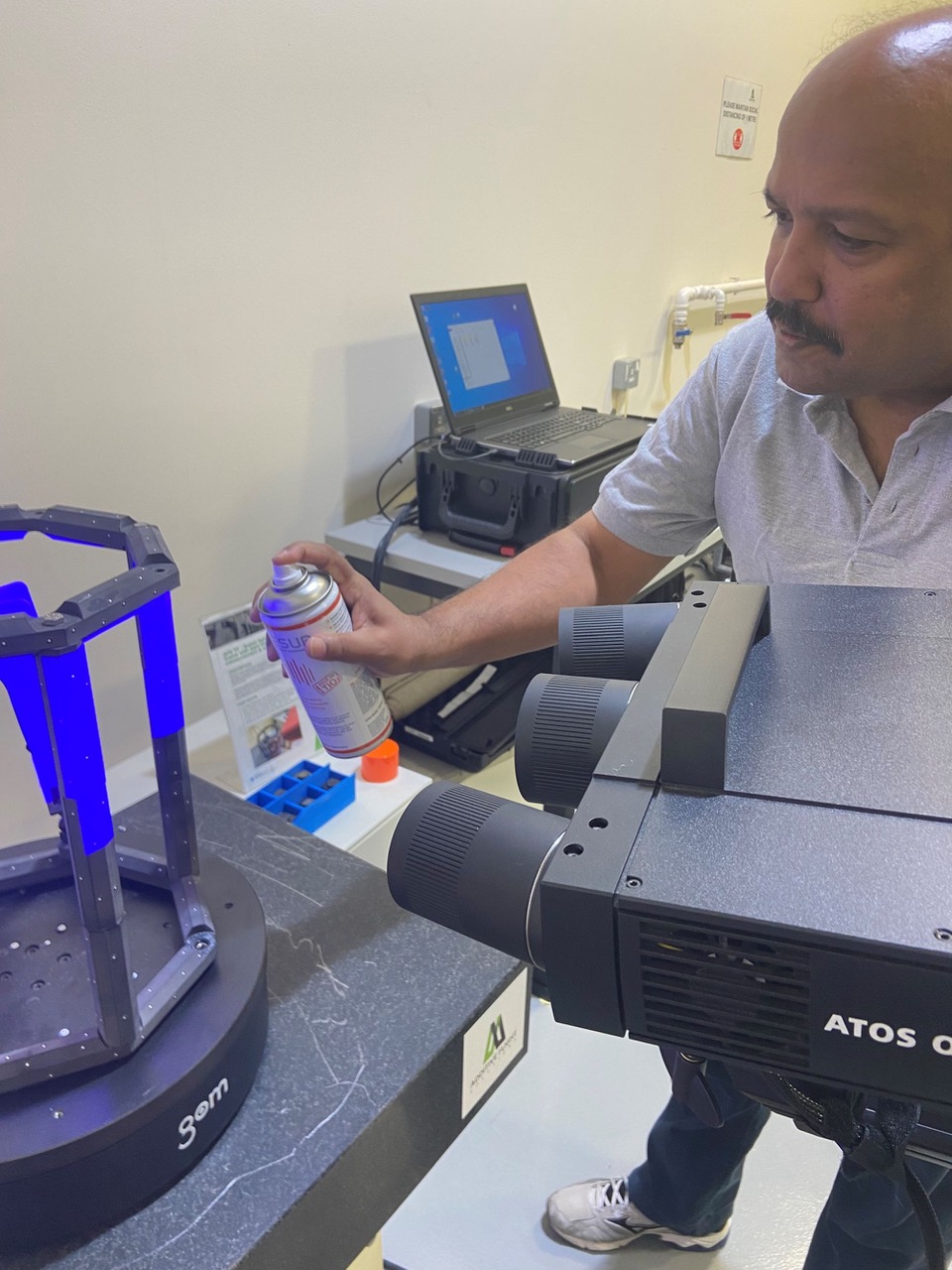To ensure safety on board aircraft, door latches are secured with special covers that prevent unintentional opening after landing. These covers are increasingly being produced using additive manufacturing, as this method offers fast and cost-effective solutions. AFS Additive Flight Solutions, a certified manufacturer based in Singapore, uses 3D printing technologies to produce these essential components.
To determine the required dimensions of the door handle cover, the locking lever is scanned directly in the aircraft. The challenge is that the anodized silver-colored handle has a slightly reflective surface that is difficult for the scanner to capture. AFS therefore uses a scanning spray from AESUB to matt the surface and make it visible to the scanner. The spray can be applied quickly and forms a homogeneous layer within a few seconds, which makes scanning possible. Another advantage is that the layer evaporates on its own after a short time, meaning that neither the handle nor the interior of the aircraft need to be cleaned.
“Because the AESUB spray evaporates so quickly, scans of the aircraft interior can be carried out during line maintenance. AESUB makes optimum use of this time to get aircraft back on the ground. As it contains no pigments, the spray is safe for passengers, staff and users,” explains Stefan Röding, General Manager of Additive Flight Solutions.
The design of the cover is developed and a prototype printed based on the data collected in the aircraft. This is tested on the original door handle to ensure that it fits and functions correctly. If the part meets all specifications, it is approved by the airline’s DOA (Design Organization Approval). Production of the small series then begins.
AFS uses Ultem 9085 in black for the 3D printing of the door covers. This high-performance thermoplastic is specially designed for the production of aircraft cabin parts and meets the necessary requirements for use in aircraft due to its high strength-to-weight ratio. Ultem 9085 is characterized by high impact resistance and chemical tolerance.
The printed parts are compared with the data recorded in the CAD system for verification. As black components are difficult to scan, the covers are sprayed again with the AESUB spray. Crucially, the spray dissolves by itself after the scanning process, which considerably simplifies the subsequent production process.
The parts are held on a modular measuring frame for a seamless 3D scan. Articulated arms with clamps hold the components in place so that they can be scanned from all angles. Reference points are placed directly on the frame, which saves a lot of time, especially when repeatedly measuring small batches.
The time saved per component is around 10 minutes, which saves a week’s work for a series of 200 parts. The modular frame is adapted to the size of the measurement object to ensure the optimum distance between the measurement points. The interaction between the AESUB scanning spray and the modular measuring frame significantly speeds up the entire quality assurance process and provides reliable information on dimensional accuracy more quickly.









